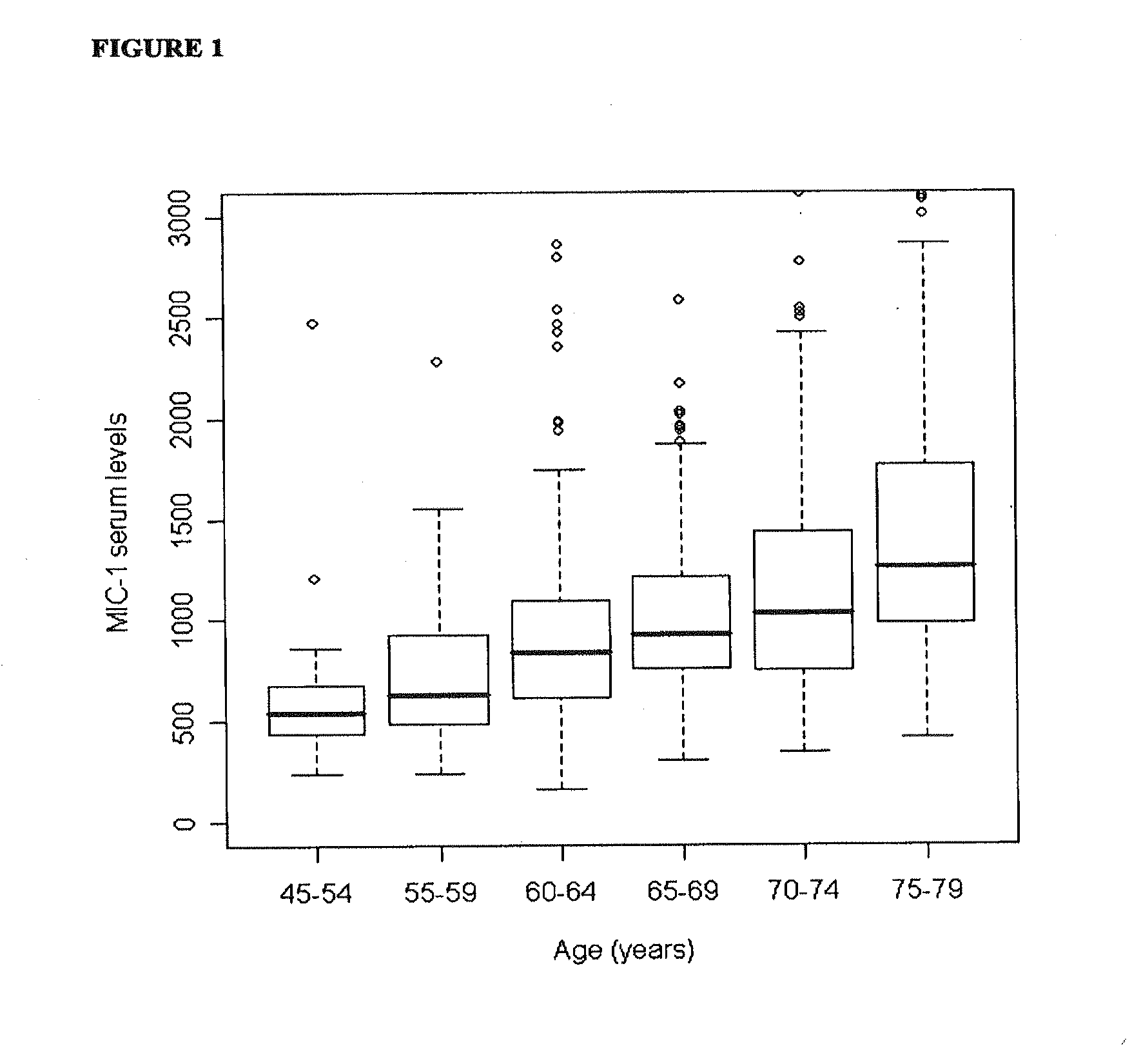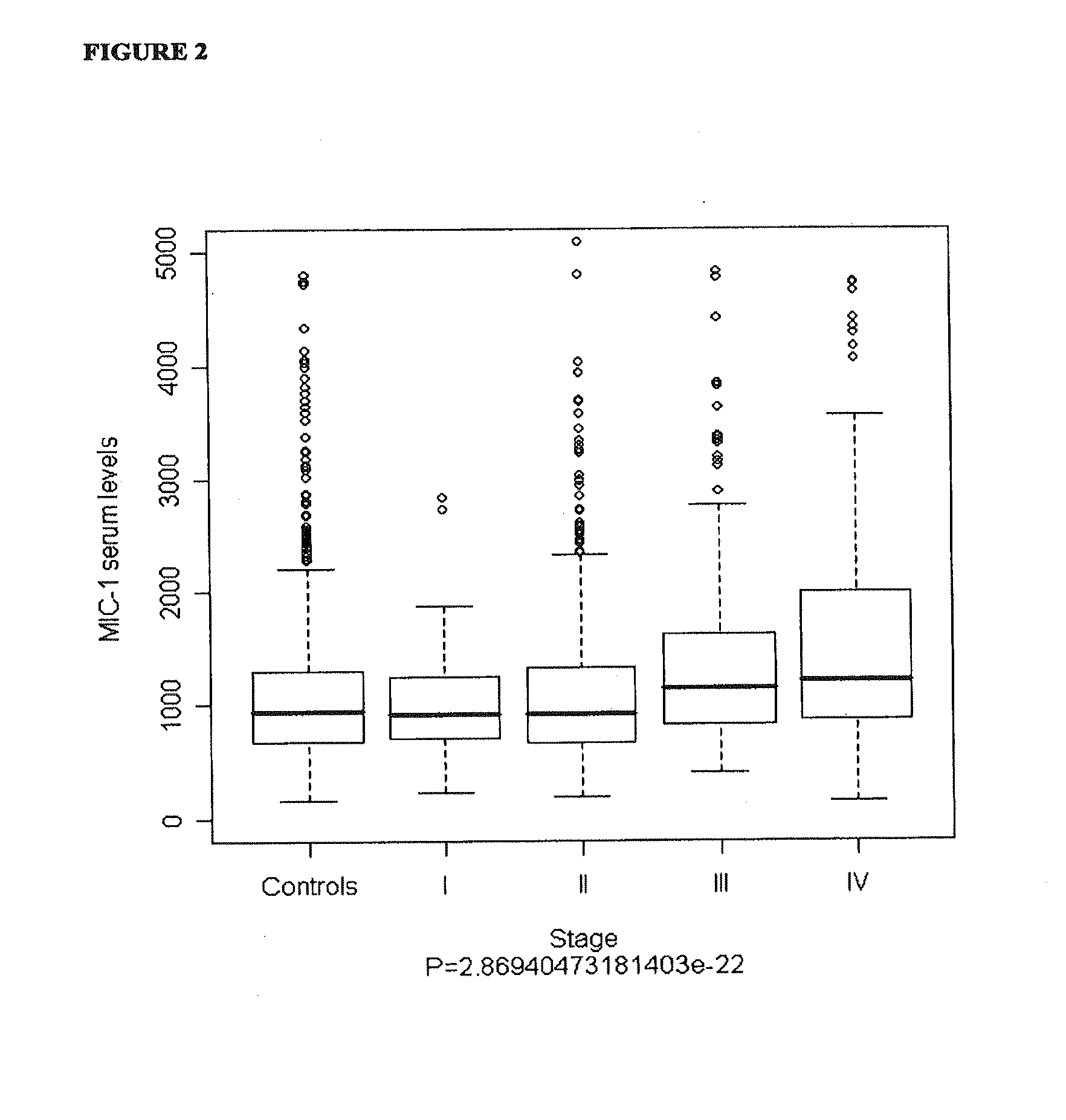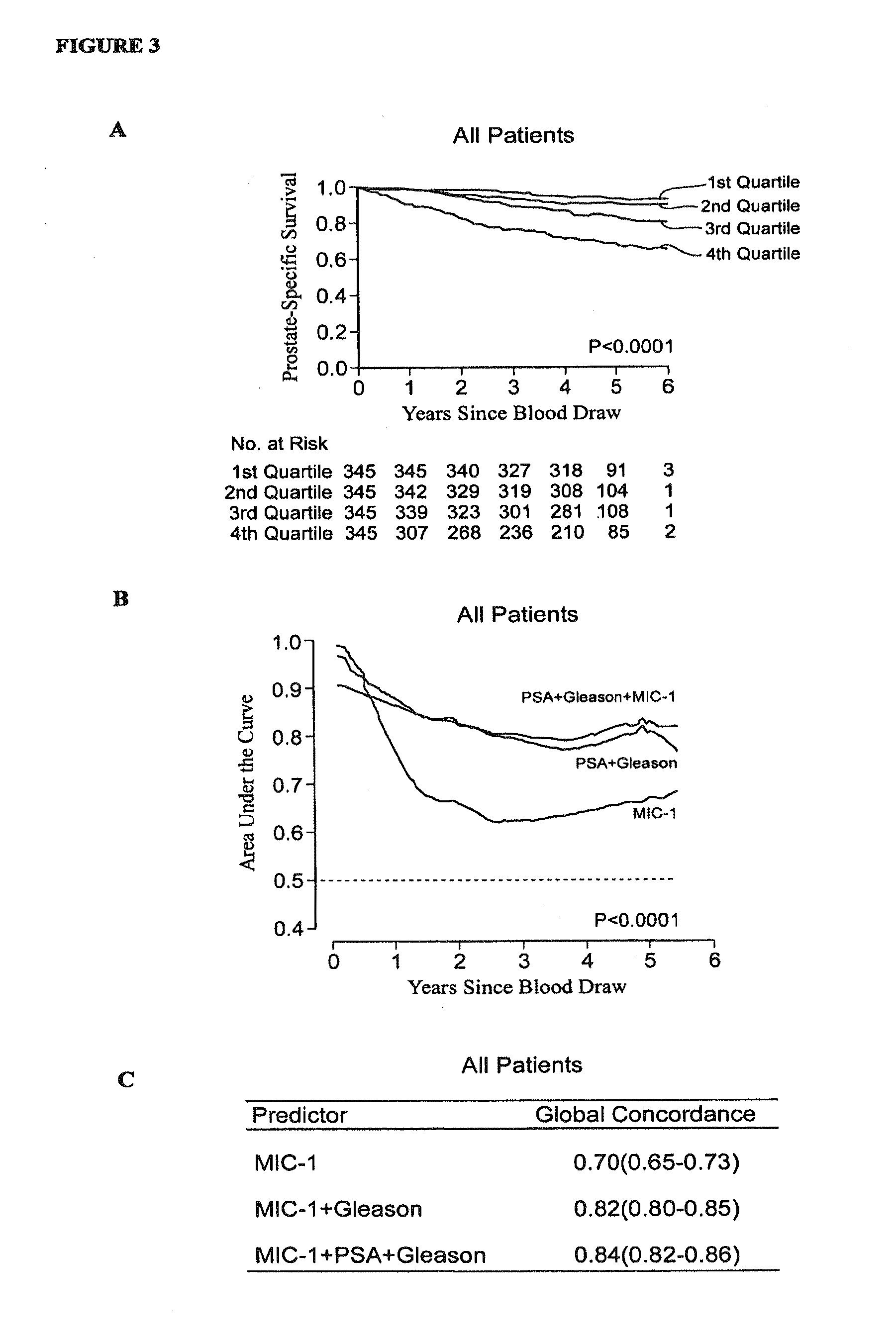Methods of prognosis
a prognosis and method technology, applied in the field of medical prognosis, can solve the problems of invasive and expensive techniques, methods of safely discriminating, and requiring time-consuming expert analysis, and achieve the effect of increasing the probability of death of the subj
- Summary
- Abstract
- Description
- Claims
- Application Information
AI Technical Summary
Benefits of technology
Problems solved by technology
Method used
Image
Examples
example 1
Serum Concentrations of MIC-1 in Healthy Control Population and Prostate Cancer Patients
Materials and Methods
Prostate Cancer Study Population
[0112]The prostate cancer population was part of a population-based case-control study of prostate cancer aetiology known as the Cancer Prostate in Sweden (CAPS) study, which was conducted in two phases with enrolment between January 2001 and October 2003. Briefly, subjects were all men between 35 and 79 years of age with pathologically verified adenocarcinoma of the prostate (ICD-10: C61). Serum samples from 1380 prostate cancer cases were retrieved for MIC-1 serum analysis. Clinical information such as tumour-node-metastasis (TNM) stage, Gleason sum, diagnostic prostate-specific antigen (PSA) concentration, and primary treatment was obtained through linkage to the National Prostate Cancer Registry (Table 1). Prostate cancer patients donated blood, on average 4.9 months (range 0.7 to 23.7 months) after the date of diagnosis, which were stored ...
example 2
Further Examination of Association of Serum MIC-1 with Survival in the Apparently Healthy Male Control Population Cohort
Materials and Methods
Follow-Up Assessment of Male Control Population Subjects
[0130]For the initial cohort of 876 apparently healthy men described above, complete follow-up for specific mortality was achieved up until 1 Mar. 2007 through record linkage to the Swedish Cause of Death Registry using each study participant's unique national registration number. Review of death certificates established cause of death for individuals deceased after 31 Dec. 2004. The average follow-up time was 5.2 years (range 0.1 to 5.9 years). A total of 102 patients (12%) died during follow-up, with cause of death obtained from death certificates and coded according to the International Classification of Diseases (ICD) standards. In addition to looking at overall mortality, the primary causes of death due to cancer (ICD9 140 to 239, ICD10 C00 to D48) and cardiovascular disease (CVD) (IC...
example 3
Association of Serum MIC-1 in an Independent Cohort of Twins
[0135]For validation purposes, the association of serum MIC-1 with survival was examined in an independent cohort of twins.
Materials and Methods
Twin Cohort
[0136]The twin cohort included 308 subjects (comprising 154 same-sex twin pairs) nested within the Swedish Twin Registry21, currently the largest population-based twin registry in the world registering more than 85,000 twin pairs born since 1886. The subset of twins for the current analyses participated in studies of aging22, 23. Zygosity had been previously determined by asking pairs if they were “as similar as peas in a pod” or “no more alike than siblings in general”; and zygosity was confirmed for all pairs by either restriction fragment length polymorphism (RFLP) or serologic testing and microsatellite markers.
Follow-Up Assessment of Twin Cohort
[0137]For the 308 subjects within the twin population, death dates were obtained through the Registry of the Total Populatio...
PUM
| Property | Measurement | Unit |
|---|---|---|
| time | aaaaa | aaaaa |
| time | aaaaa | aaaaa |
| time | aaaaa | aaaaa |
Abstract
Description
Claims
Application Information
 Login to View More
Login to View More - R&D
- Intellectual Property
- Life Sciences
- Materials
- Tech Scout
- Unparalleled Data Quality
- Higher Quality Content
- 60% Fewer Hallucinations
Browse by: Latest US Patents, China's latest patents, Technical Efficacy Thesaurus, Application Domain, Technology Topic, Popular Technical Reports.
© 2025 PatSnap. All rights reserved.Legal|Privacy policy|Modern Slavery Act Transparency Statement|Sitemap|About US| Contact US: help@patsnap.com



